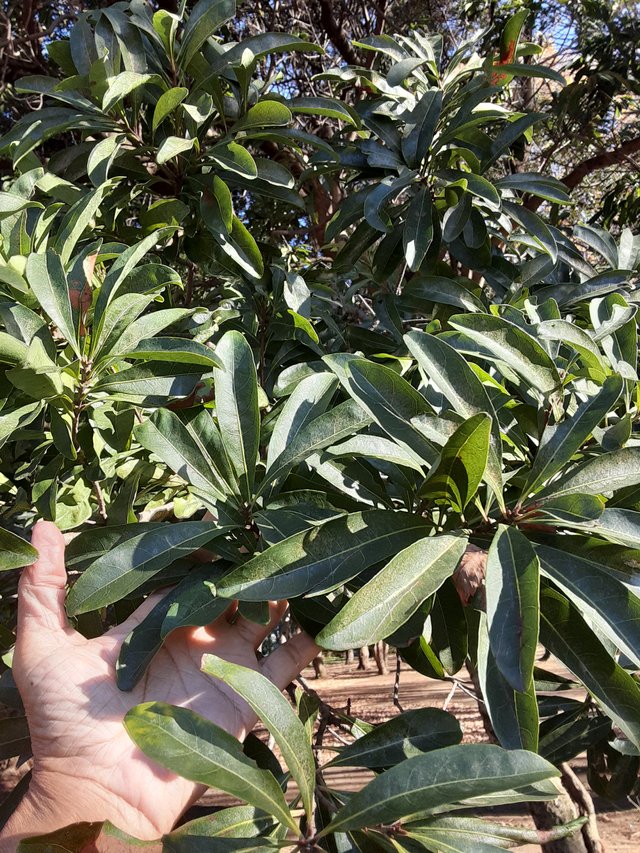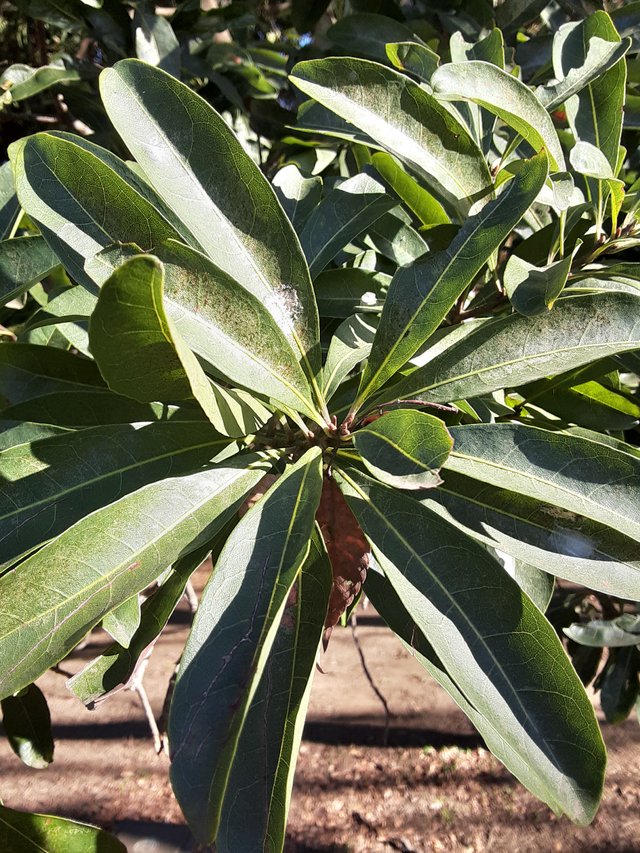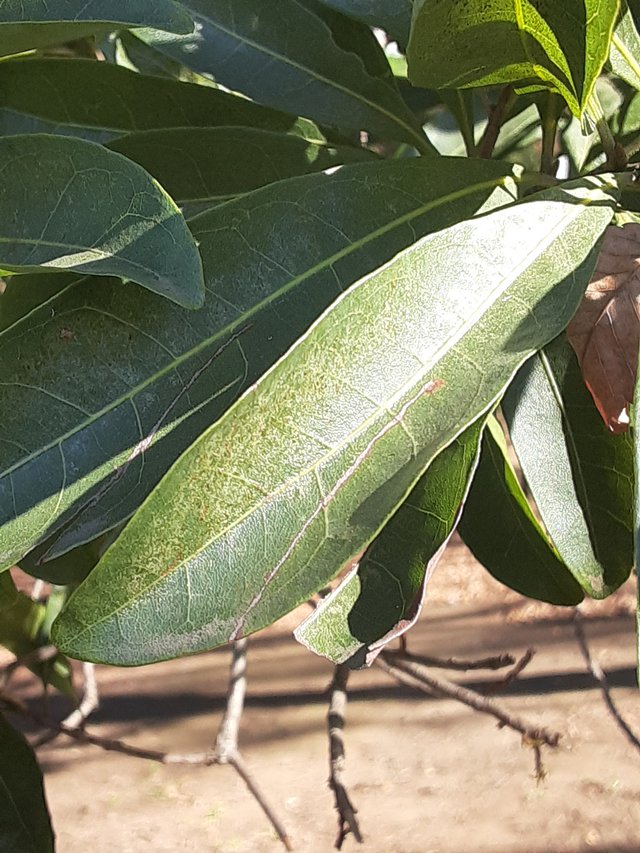Myrica rubra, an East Asian evergreen tree, has distinctive leathery leaves that are crucial for photosynthesis and may possess potential medicinal properties

Myrica rubra, also known as the Chinese bayberry or red bayberry, is a fascinating evergreen tree native to East Asia. It is particularly renowned for its unique, edible fruit, but its leaves also hold significance.
The leaves of Myrica rubra are simple, alternate, and leathery. They have a distinctive shape, being elliptic-obovate to oval-lanceolate, with a wedge-shaped base and a rounded or pointed tip. The leaf margin is often serrated or toothed, especially towards the upper half. The upper surface of the leaf is a glossy dark green, while the underside is paler and may exhibit a sparse to moderate covering of golden glands.

These leaves play a crucial role in the plant's life cycle. They are responsible for photosynthesis, the process by which the tree converts sunlight into energy. Additionally, the leaves contribute to the plant's overall water balance through transpiration, the release of water vapor into the atmosphere.
Beyond their functional significance, the leaves of Myrica rubra have also been used in traditional medicine. They are believed to possess various medicinal properties, including anti-inflammatory and antioxidant effects. Some studies have even suggested potential anticancer properties associated with compounds found in the leaves. However, more research is needed to fully understand and validate these claims.

In conclusion, the leaves of Myrica rubra are not just passive structures but play vital roles in the plant's physiology and may offer potential health benefits. As research continues, we may gain a deeper appreciation for the multifaceted contributions of these seemingly simple leaves.
Ref.:
 |  |
Upvoted! Thank you for supporting witness @jswit.